Fagradalsfjall Travel Guide
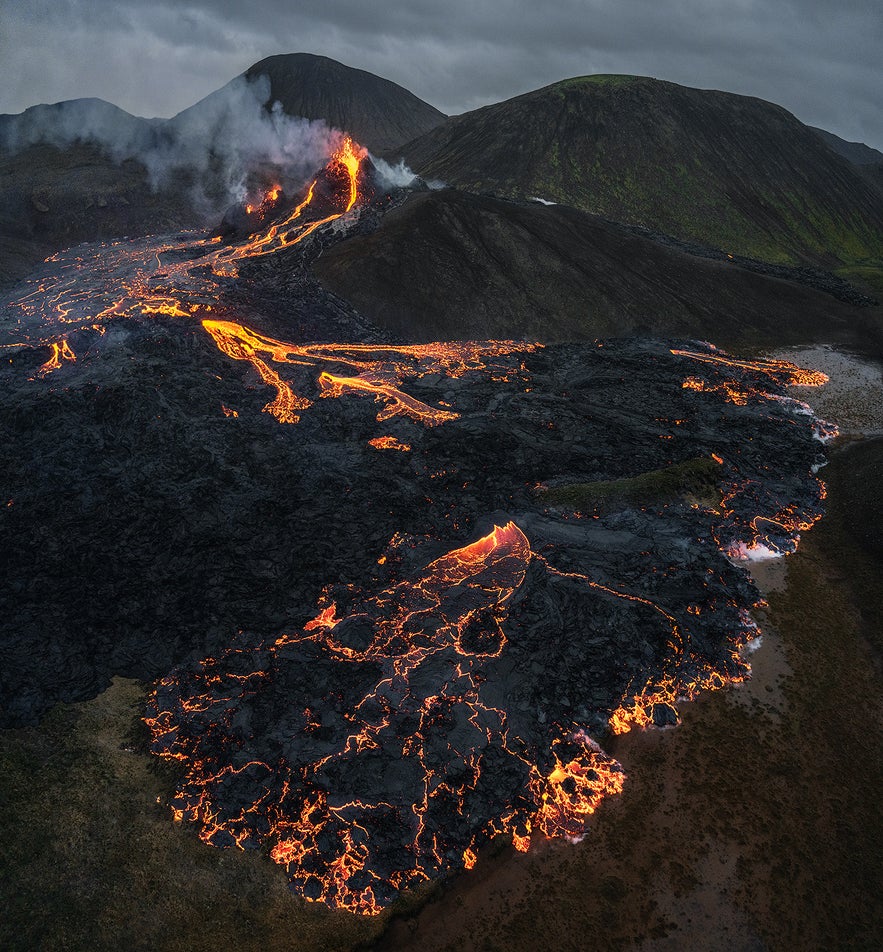
Fagradalsfjall is a shield volcano that erupted in Iceland in March of 2021, again in August 2022, and most recently in July 2023. You can find it on the Reykjanes peninsula, close to Keflavik International Airport and the Sundhnukagigar eruption site of 2023 and 2024.
Fagradalsfjall is a large shield volcano, the tallest peak of which stands at 385 meters. Though it is uninhabited, its appealing landscapes were appreciated by early Icelanders, who named it "beautiful valley mountain." The surrounding valley is named Geldingadalur.
The closest roads to Fagradalsfjall are Route 43 and 427, accessible throughout the year; Route 43 is notable for being home to the most famous feature of the Reykjanes Peninsula, the Blue Lagoon. The historic town of Grindavik is just seven kilometers away and is known for its fishing industry.
2023 Eruptions by Fagradalsfjall
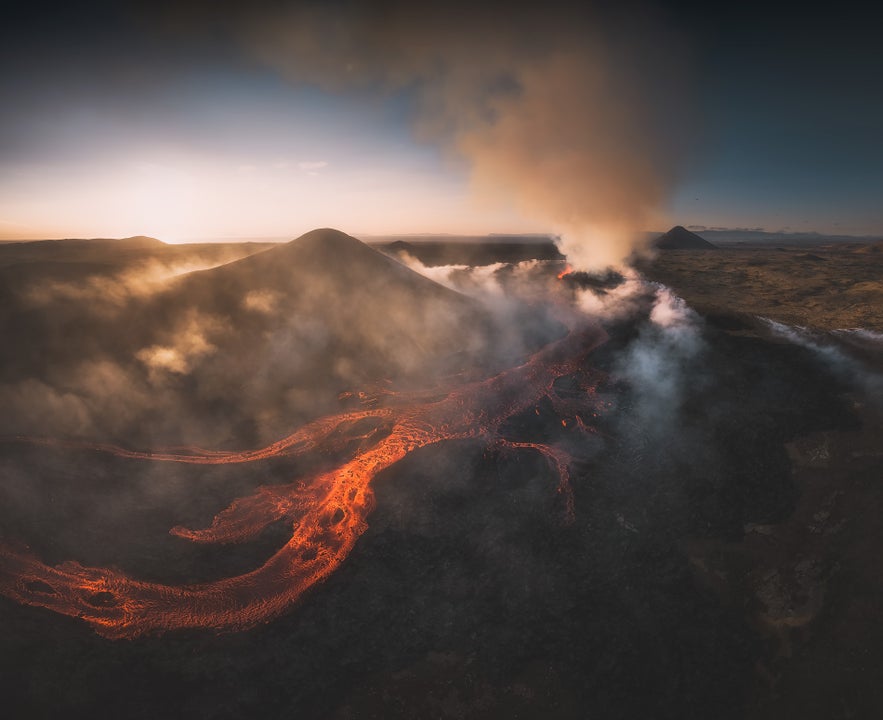 On July 10th, 2023, a new eruption started in the area of Fagradalsfjall, by Litli-Hrutur mountain. The start of the eruption was up to 10 times more powerful than the first one in the vicinity. The eruption ended on August 5th, 2023.
On July 10th, 2023, a new eruption started in the area of Fagradalsfjall, by Litli-Hrutur mountain. The start of the eruption was up to 10 times more powerful than the first one in the vicinity. The eruption ended on August 5th, 2023.
The eruption by Litli-Hrutur was not the end of volcanic activity in the region, as the earth began rumbling again in October, this time near the town of Grindavik. On December 18th, a new fissure opened in Sundhnukagigar, even more powerful than all of the other eruptions in previous years.
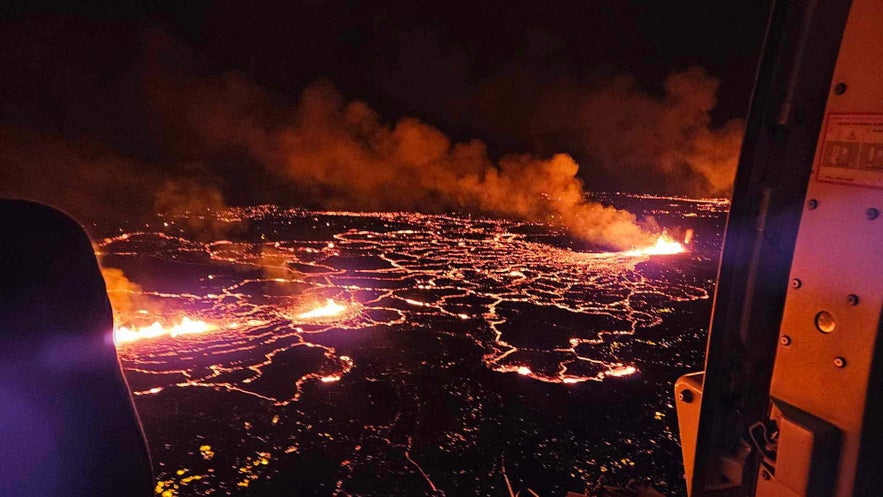 The eruption in Sundhnukagigar didn't last for long as, much to the relief of the inhabitants of Grindavik, it was declared over on December 21st. It was followed by an eruption of Hagafell mountain on January 14th, 2024, and then even more eruptions in Sundhnukagigar.
The eruption in Sundhnukagigar didn't last for long as, much to the relief of the inhabitants of Grindavik, it was declared over on December 21st. It was followed by an eruption of Hagafell mountain on January 14th, 2024, and then even more eruptions in Sundhnukagigar.
If you want to get a chance to see the eruption area, check out our volcano tours, where you get a fantastic chance to witness these new pieces of earth for yourself.
- See the Complete Guide to the 2023 Eruption of Litli-Hrutur Volcano
- Discover the Complete Guide to the 2024 Sundhnukagigar Volcanic Eruptions
- See also: Guide to the 2023 Sundhnukagigar Eruption and the 2024 Hagafell Eruption
- Learn more about volcanoes with the Ultimate Guide to Volcanoes in Iceland
Fagradalsfjall’s 2022 Eruption
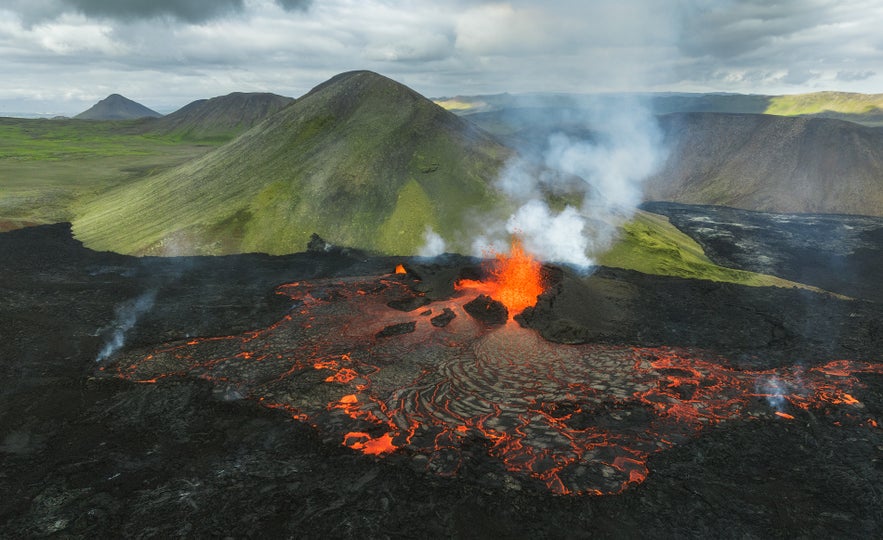 Fagradalsfjall volcano erupted again on August 3rd, and the eruption lasted for three weeks. It was located in Meradalir valley on the Reykjanes peninsula, about 1 kilometer from the eruption in 2021. The rift zone of the eruption is over 300 meters long, and 20-50 square meters of lava spewed out every second during the start of the eruption, according to the Icelandic Meteorological Office.
Fagradalsfjall volcano erupted again on August 3rd, and the eruption lasted for three weeks. It was located in Meradalir valley on the Reykjanes peninsula, about 1 kilometer from the eruption in 2021. The rift zone of the eruption is over 300 meters long, and 20-50 square meters of lava spewed out every second during the start of the eruption, according to the Icelandic Meteorological Office.
Prior to the eruption, there had been high tectonic activity on the Reykjanes peninsula, including multiple earthquakes that could be felt in Reykjavik. Fresh lava finally reached the surface on August 3rd for the first time since the last eruption ended in September 2021. Fortunately, the eruption did not create ashfalls like the Eyjafjallajokull volcano in 2010, so it did not disrupt air travel.
In a land of natural wonders, a volcanic eruption creates some incredible landscapes with its black solidified lava. If you are currently in Iceland, don't hesitate to make the most of this opportunity and book a guided tour to see the eruption area up close. Reaching the volcano is an adventure, so expect to hike for at least an hour, and make sure to wear good hiking shoes and warm clothes. Also, don't miss out on the eruption site of Litli-Hrutur. If you prefer not to walk, we recommend booking a helicopter tour of the volcano site, allowing you to explore Meradalir valley from above.
Fagradalsfjall’s 2021 Eruption
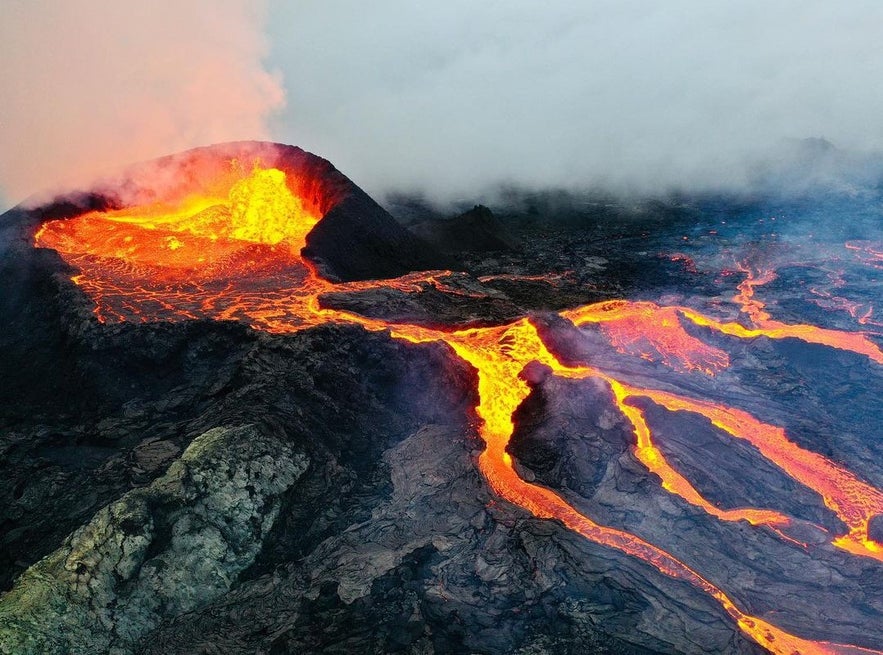 Fagradalsfjall’s much-anticipated eruption began on March 19th around 9:30 PM. Before this, Reykjavik and the Reykjanes Peninsula had undergone several weeks of constant tremors and earthquakes, a sign that volcanic activity was imminent. Seismographs recorded over 53,000 of these, and though most could not be felt, some reached 5.7 on the Richter scale and caused minor damage to buildings.
Fagradalsfjall’s much-anticipated eruption began on March 19th around 9:30 PM. Before this, Reykjavik and the Reykjanes Peninsula had undergone several weeks of constant tremors and earthquakes, a sign that volcanic activity was imminent. Seismographs recorded over 53,000 of these, and though most could not be felt, some reached 5.7 on the Richter scale and caused minor damage to buildings.
Fagradalsfjall was a stunning location for the eruption to begin, as this volcano had been dormant for 6,000 years, a comparatively long time even for this peninsula, which hasn't seen volcanic activity for 800 years.
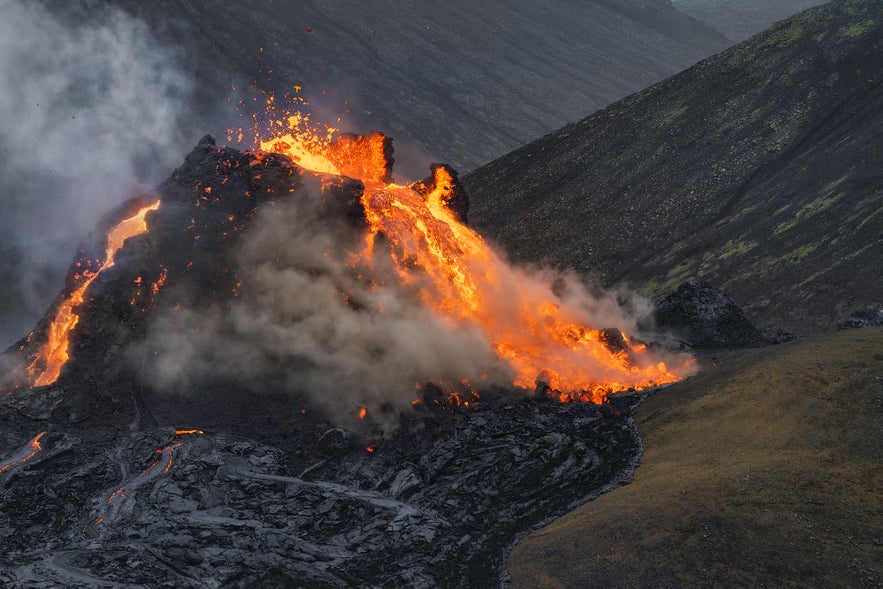
The initial rift was 700 meters long and covered one square kilometer. Thankfully, however, Fagradalsfjall is located in a sheltered, uninhabited valley, and though its magma chamber is deep, its lava flow was effusive rather than explosive. As such, it posed no threat to infrastructure and was mainly safe for people to visit.
Despite this, it still released poisonous gases such as sulfur dioxide, which was dangerous for those with respiratory conditions. This was even the case for those living in the surrounding area if the winds were unfavorable.
Attractions Nearby
Popular categories

Download Iceland’s biggest travel marketplace to your phone to manage your entire trip in one place
Scan this QR code with your phone camera and press the link that appears to add Iceland’s biggest travel marketplace into your pocket. Enter your phone number or email address to receive an SMS or email with the download link.


















